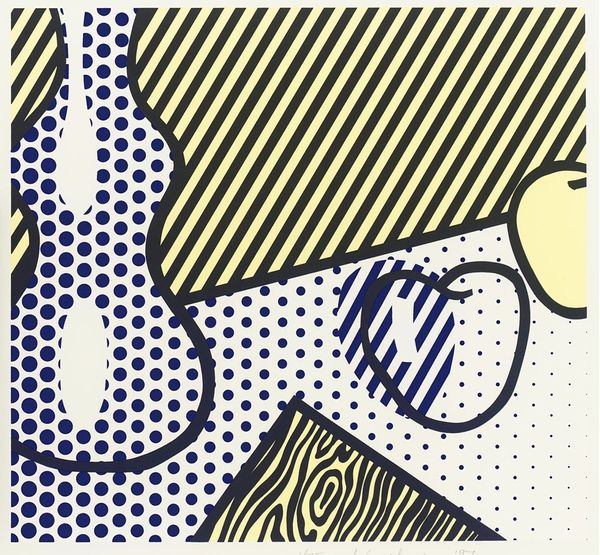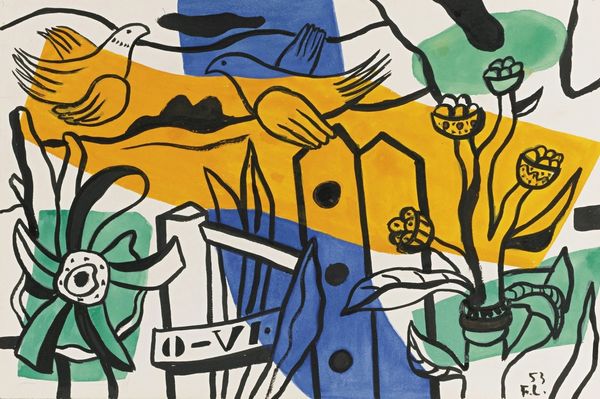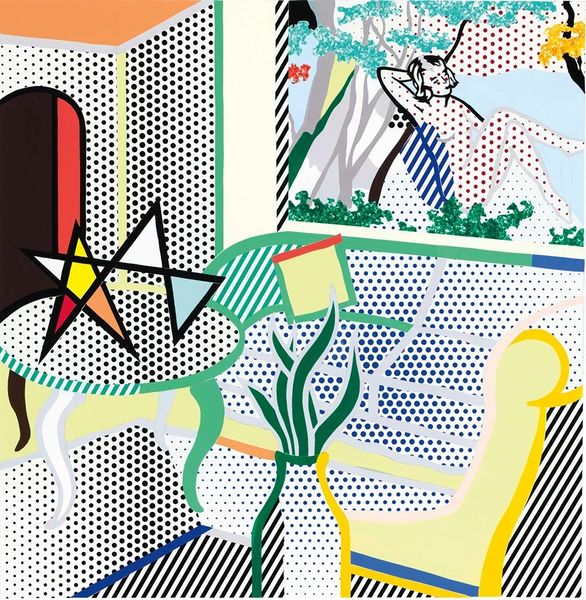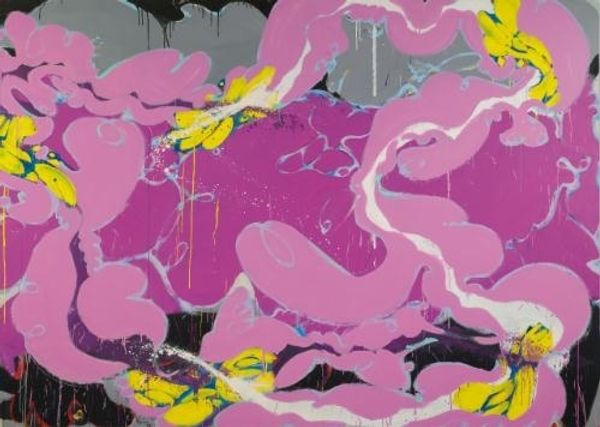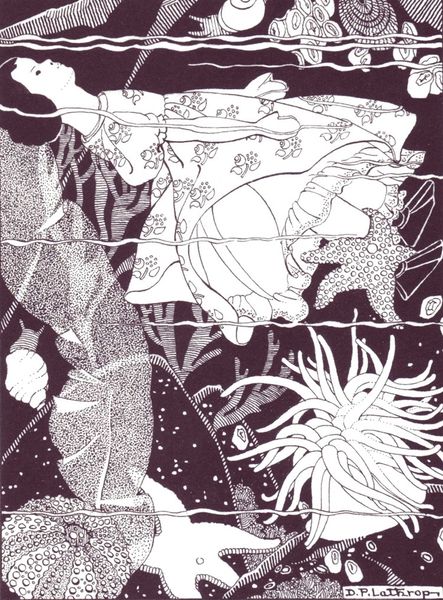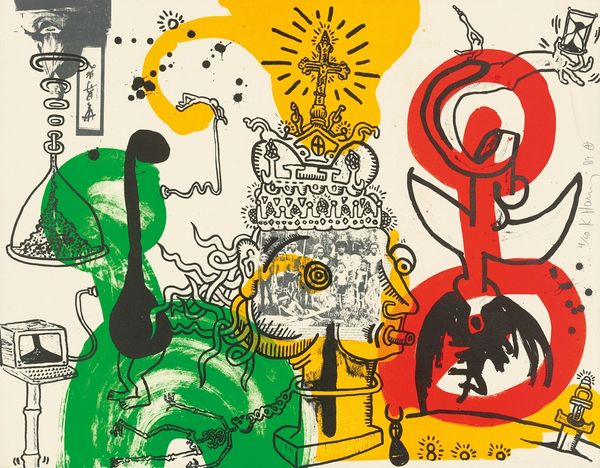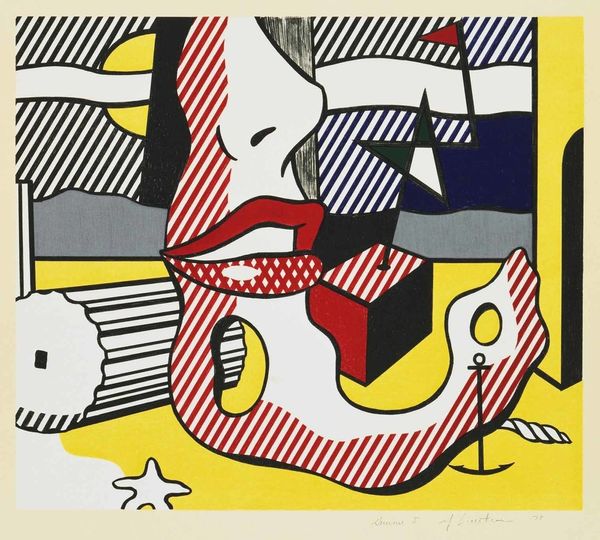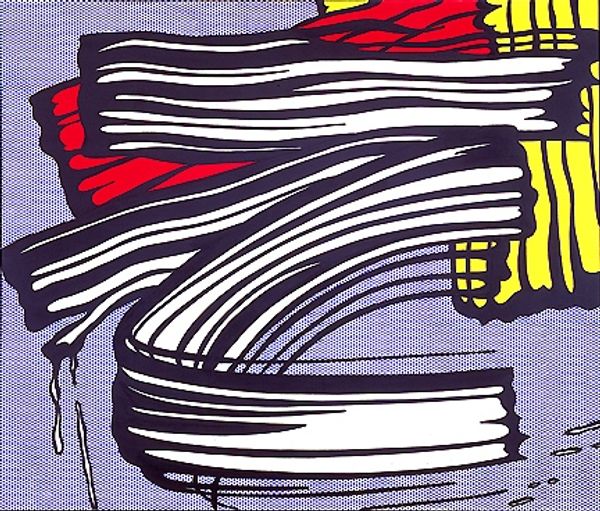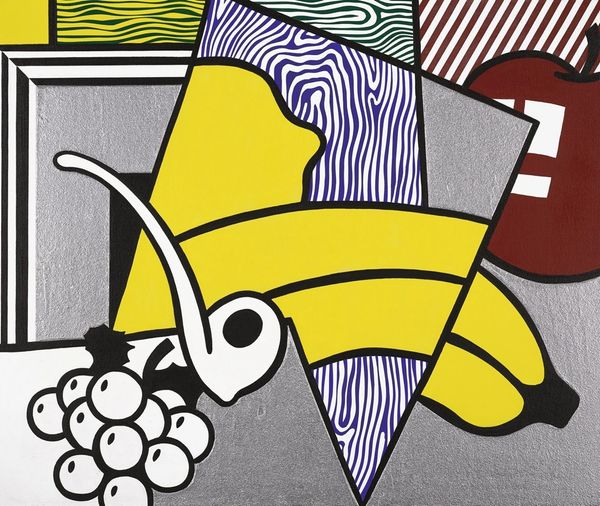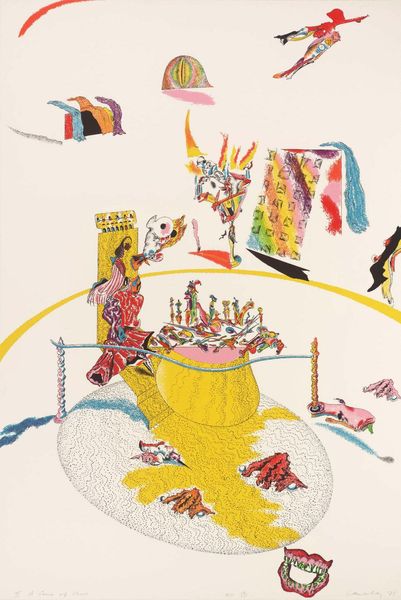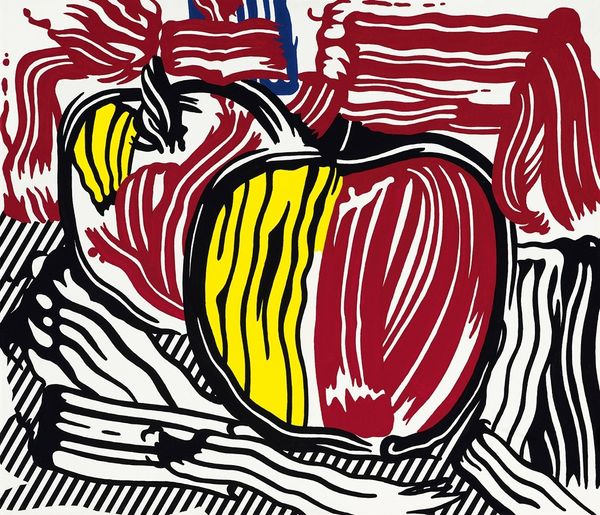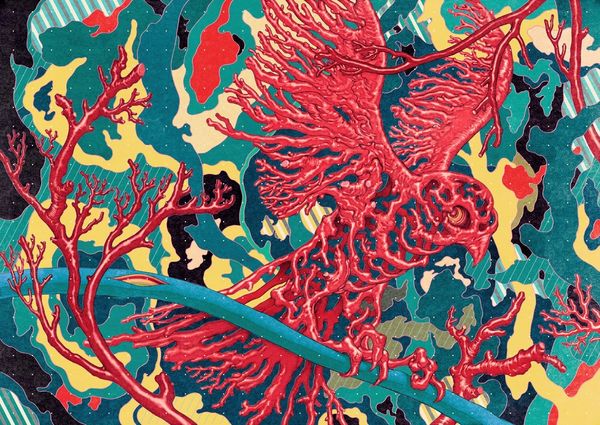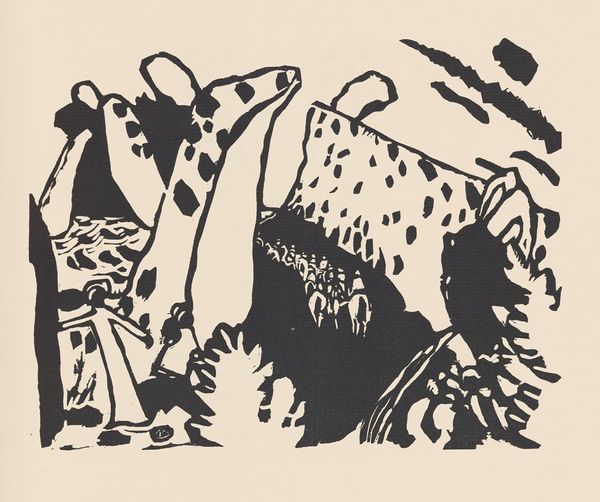
Dimensions: 152.4 x 243.8 cm
Copyright: Roy Lichtenstein,Fair Use
Curator: Well, that's quite vibrant. It looks like something straight out of a comic book exploded. What exactly are we looking at here? Editor: We are viewing Roy Lichtenstein's "Cape Cod Still Life," a 1972 piece housed in the Museum Ludwig in Cologne. It is done with acrylic paint in the unmistakable Pop Art style Lichtenstein is celebrated for. It seems to be built of appropriation as well. Curator: Ah, Lichtenstein, always turning the mundane into the magnificent—or should I say, the magnificently mundane? Those thick black outlines! They transform everyday objects into larger-than-life icons, practically screaming for attention. It’s a symphony of commercial imagery made high art. And he’s captured a specific atmosphere—beachy, sun-drenched—though abstracted. The still life traditionally is loaded with cultural weight. How do you see him playing with that tradition here? Editor: By applying a mass-produced aesthetic. The Ben-Day dots and comic book style negate the unique aura often associated with the genre. It almost feels like a critique of consumerism masked as a celebration. He borrows from commercial art to explore themes of Americana. The cultural memory associated with leisure, vacations, the seaside… it’s all flattened, if you will, and reproduced, like another commodity. The symbolism of those maritime objects. Are they still as romantic in this guise? Curator: Precisely! The Ben-Day dots become not just a style, but a comment on the very nature of reproduction and image culture. I’m always drawn to the specific objects chosen – a starfish, rope, shells. All classic emblems that immediately conjure specific concepts within popular culture. Are those the key elements to create that “Cape Cod” sensibility? Editor: I’d say so. But what interests me more is how this work plays into Lichtenstein’s broader engagement with the history of art, and the place of this particular Pop work within 1970s America. To what extent did the context—a period of economic instability and cultural shifts—affect the reception and interpretation of these seemingly innocuous beach motifs, rendered in comic style? Curator: Perhaps this “Cape Cod Still Life” offered a deliberately simplified vision, offering a form of escapism? Either way, I leave feeling brighter and perhaps, oddly nostalgic. Editor: Yes, perhaps that accessibility ensured its resonance within the contemporary culture it both reflected and critiqued. Food for thought, certainly.
Comments
No comments
Be the first to comment and join the conversation on the ultimate creative platform.
